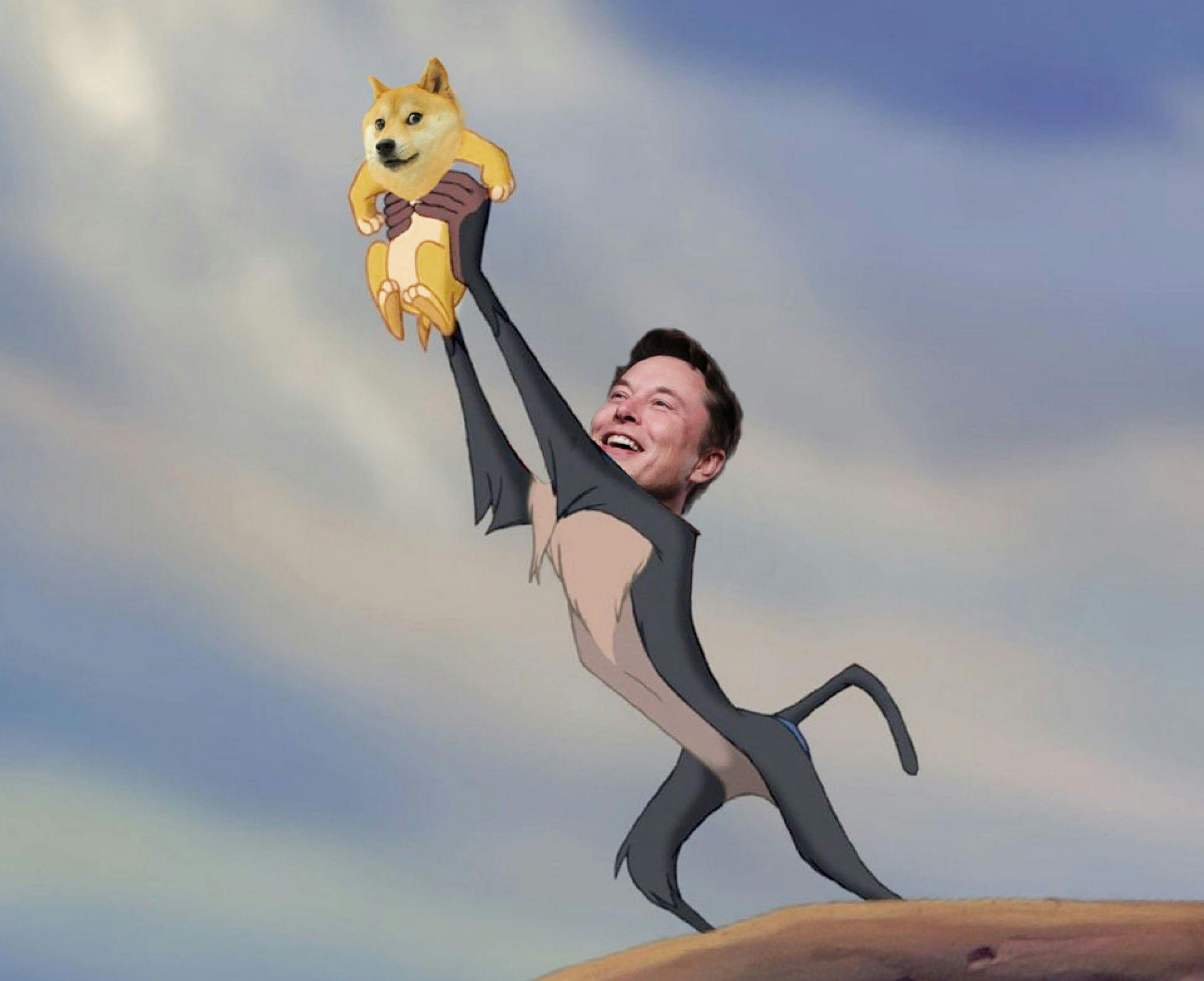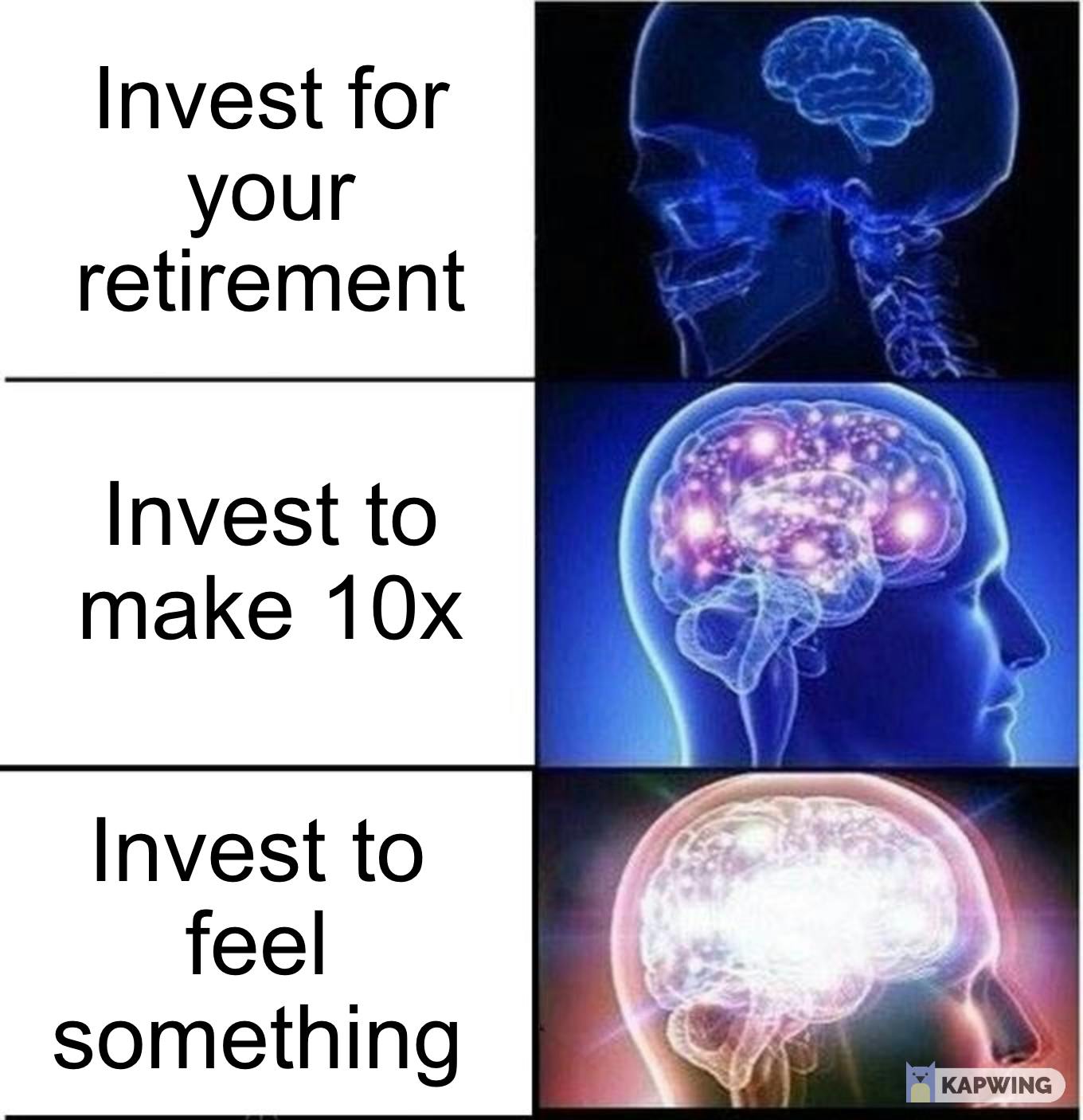Investing as Entertainment
By Shreyas Hariharan, Founder @llamacommunity. Writes about crypto & society
Join the Global Coin Research Network now and contribute your thoughts!
If you’d like to learn about crypto, join our Discord channel and be kept up to date with the latest investment research, breaking news and content, Crypto community happenings around the world!
There is a primal demand for extreme sports type thrills in finance. This includes cryptocurrencies, Tesla stock, S&P put options, and liquidity mining. Investing is a form of entertainment like riding a roller coaster or watching a horror movie. The ticket fee you are paying is in the form of possible investment losses.
Invest your money to save to buy a house, send your kids to college, save for retirement, blah blah blah. Sounds boring. Buy a call option on AMC Entertainment for $300 to make $10,000 if the stock is up 30% by Friday? Sounds fun.

We typically separate investment and consumption goods. Consumption goods are meant to be consumed and have no future productive use. Investment or capital goods are used to produce more consumption goods. But what about investment goods being sold as consumption goods? When investing is a form of entertainment, it is also a consumption good.
Retail participation in financial markets has increased. This is driven by:
- Zero interest rates, money printing, stimulus checks, and late cycle bull market activity
- Improved UX through Robinhood, Coinbase, and Uniswap
- Boredom markets hypothesis, i.e. there are a bunch of amateur traders right now who are bored and looking for a quick buck
Investing gives you dopamine snacks
There are two dopamine snack laws:
- We want dopamine snacks
- We seek the most efficient path to get dopamine snacks
We don’t like to delay our dopamine snacks and we move to products that deliver dopamine snacks more efficiently. People typically talk about getting dopamine from social media use. But due to improved UX, investing can deliver dopamine effectively too.
Robinhood isn’t competing with Interactive Brokers and Charles Schwab. It is competing with Netflix and TikTok. DeFi has built an even better casino than Robinhood and Wall Street. Besides the profits and the novelty, people are attracted to DeFi because it is entertaining. DeFi is an e-sport.
The original degen wore a suit, made aggressive phone calls, and traded bonds on Wall Street. The modern degen is pseudonymous, makes memes, and buys assets that make a good story. The modern degen researches and farms food coins like Sushi, Yam, Pickle, and Pancake.
Some rely on investing for their emotional needs in a similar way that people have relied on social media.

Ana doesn’t necessarily want to invest for her retirement or to make a profit. She wants to invest to feel something.

Invest as a tribe. Meme value into existence.
Communities like r/WallStreetBets make investing social. People share their ups and downs with each other. It is like experiencing a concert together, except you’re headbanging to the wild swings in your P&L.
The WallStreetBets community has shown the power of investing as a tribe. In January 2021, many members bought call options on Gamestop that caused massive losses for hedge funds that shorted the stock.
In June 2020, some WallStreetBets members YOLO’d into longing Hertz right after it filed for bankruptcy. Nothing is more entertaining than a bankrupt company resurging into prominence because of a bunch of smart shitposters online.
Tribes have the power to meme something into existence. Elon is rallying his tribe to make Dogecoin the future global currency. He is likely tweeting this ironically, but the most ironic or entertaining outcome could be the most likely.
Chainlink started out as a useless token. It got attention on 4chan and had a huge price run up that was unjustified. But the Link Marines memed something of value into existence. They managed to put that capital to use. Chainlink is now a useful decentralized oracle network. It allows Ethereum smart contracts to connect to external data sources, APIs, and payment systems.
Volatility is a way to bootstrap growth. It is a form of entertainment. When an asset is volatile, it gets talked about more so it gets traded more; e.g. Ampleforth, Chainlink, and Dogecoin. If an asset has meme potential, it has volatility potential. Memes and price volatility can inject energy into the asset’s tribe. This energy can eventually positively impact the development of the project itself.
Potential implications
Crypto enables the financialization of almost everything, including things you didn’t think could be financialized. This includes a meme, a song, a person’s future net worth, or a community. This amplifies the “investing as entertainment” thesis even further.
If you thought investing in Gamestop was entertaining, what about if you could invest in WallStreetBets itself? Or what if you could own some $KANYE tokens and watch how the price fluctuates based on Kanye’s moods and outbursts? What if you could invest in a funny tweet before it went viral and pocket some gains?
Caveat
While “investing as entertainment” is a secular trend, we live in a unique period. Interest rates are at 0, money printing is at an all-time high, fiscal spending is high, and this market cycle has already carried on for 10+ years. Sports bars playing CNBC during the late 90s was an indication of the dotcom bubble. Similarly, teenagers making TikTok videos on day trading could be an indication of an asset bubble. Retail participation would be lower if not for these cyclical factors.
Conclusion
The internet increases variance and variance is entertaining. Media has become more entertaining: Alex Jones, Taylor Lorenz, and Joe Rogan. Politics has become more entertaining: Trump, AOC, and Andrew Yang. Investing is also becoming more entertaining: WallStreetBets, Chamath, and Degen Spartan. Shitposting and serious business get done together. Memes have ROI.
-
Real investing is about accumulating new capital very slowly. It is about using the power of compound interest. As Charlie Munger reminds us, when he was younger his goal was to get rich SLOWLY. Real investing is very, very boring.
In fact, the best strategies for real investing start with the word “passive.” Even the best funds for retirement investing are called “passive” funds. It is about getting low fees so you can get rich … but get rich slowly.
But now-a-days, many people don’t want to be passive. They want to be part of the story.
More: https://summation.net/2021/03/15/response-to-investing-as-entertainment-betting-vs-investing/












